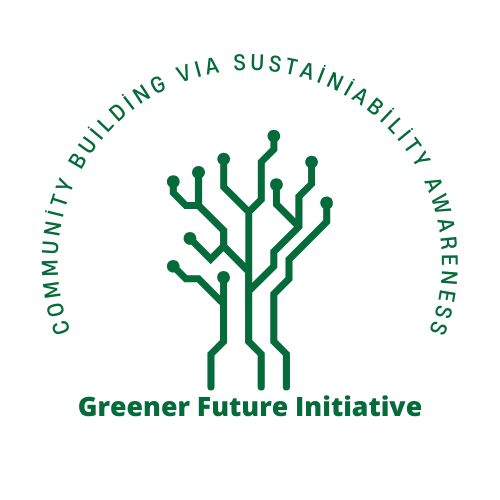How can we achieve sustainability through collaboration?
Sustainability is one of the most urgent challenges facing our planet today. From climate change to environmental degradation, the need for sustainable solutions is more pressing than ever. However, addressing these challenges requires more than just individual efforts. It requires collaboration between industries, governments, and non-profit organizations to create impactful change.
In this article, we will explore how partnerships can drive sustainability and help achieve shared sustainability goals.
The Importance of Collaboration in Achieving Sustainability Goals
When it comes to sustainability, no single organization or sector can tackle the issues on its own. The challenges are complex, interconnected, and global. This is why collaboration is key. By working together, different sectors can pool resources, expertise, and innovation to address sustainability challenges more effectively. Whether it’s reducing carbon emissions, conserving natural resources, or promoting social equity, partnerships can provide the necessary framework for large-scale, long-lasting solutions.
How Industries, Governments, and Non-Profits Can Collaborate
Each of the three sectors—industry, government, and non-profit—plays a unique role in driving sustainability. Let’s look at how each can contribute to a collaborative effort and the power of working together.
1. Industries: Leveraging Innovation for Sustainable Practices
The private sector, particularly industries, has a significant impact on sustainability. From manufacturing to transportation, industries are responsible for a large portion of global greenhouse gas emissions and resource depletion. However, businesses also have the resources and capabilities to innovate and drive change.
By adopting more sustainable practices, industries can reduce their environmental footprint. But when they partner with governments and non-profits, they can amplify their impact. For example, companies can implement green technologies, reduce waste, and develop eco-friendly products. However, through collaboration, they can also receive funding, regulatory support, and guidance to make these changes at a much larger scale.
The private sector can also collaborate with non-profit organizations to fund and support sustainable initiatives. Many companies today are focusing on corporate social responsibility (CSR) and sustainability as part of their business models. By working with non-profits, businesses can ensure their efforts align with broader sustainability goals and gain public trust.
2. Governments: Setting Policies and Providing Resources
Governments play a crucial role in sustainability through policy development, regulation, and the provision of resources. Governments can create the right environment for collaboration by setting clear sustainability goals, incentivizing green technologies, and enforcing environmental regulations. They can also provide financial support, grants, and tax incentives to businesses and non-profits working on sustainability projects.
For example, governments can establish frameworks for public-private partnerships (PPP) that bring together industries and non-profit organizations to work on large-scale sustainability projects. These partnerships can focus on renewable energy, waste management, water conservation, and more. Through this collaboration, governments can help overcome the challenges of limited resources and encourage more businesses to invest in sustainable solutions.
3. Non-Profits: Driving Advocacy and Community Engagement
Non-profit organizations are often at the forefront of sustainability efforts. They work to raise awareness, advocate for change, and mobilize communities to take action. Non-profits often have deep knowledge of local issues and can connect with communities in ways that governments and industries cannot. By collaborating with businesses and governments, non-profits can ensure that sustainability efforts address the needs of vulnerable communities and have a broader societal impact.
Non-profits also help in building the foundation for sustainable development. They provide valuable research, support grassroots initiatives, and foster collaboration between different stakeholders. They often act as mediators, bringing industries and governments together and ensuring that sustainability projects are inclusive and equitable.
Examples of Successful Collaborations Driving Sustainability
There are numerous examples of successful collaborations that have made significant strides in achieving sustainability goals. These partnerships showcase the power of collective action and highlight how different sectors can work together for positive change.
1. The Paris Agreement: A Global Government Partnership
The Paris Agreement, signed in 2015, is one of the most well-known examples of global collaboration for sustainability. Governments from around the world came together to commit to limiting global warming to below 2 degrees Celsius above pre-industrial levels. The agreement focuses on reducing greenhouse gas emissions, increasing climate resilience, and promoting low-carbon technologies.
While the agreement is primarily a government-led initiative, it has led to partnerships with industries and non-profits. Many businesses are now aligning their sustainability goals with the Paris Agreement’s targets, committing to reduce their carbon footprints. Non-profits also play an essential role in advocating for climate action and holding governments and corporations accountable.
2. The Ellen MacArthur Foundation and the Circular Economy
The Ellen MacArthur Foundation is a great example of how non-profit organizations are driving collaboration for sustainability. The foundation focuses on promoting the circular economy—a model where resources are reused, recycled, and regenerated to reduce waste and environmental impact.
Through partnerships with major corporations, the Ellen MacArthur Foundation has worked to encourage businesses to adopt circular economy principles. Companies like Google, Nike, and Unilever have committed to adopting more sustainable practices in their production and supply chains. These collaborations are helping to shift industries away from a linear “take-make-dispose” model toward a more sustainable, regenerative approach.
3. Water Scarcity Solutions: Industry and Non-Profit Partnerships
Water scarcity is one of the most pressing global challenges. Many regions face droughts, polluted water sources, and inadequate infrastructure. In response, companies, governments, and non-profits have partnered to tackle this issue.
For example, Coca-Cola has collaborated with local governments and non-profits to improve water access and conservation efforts in water-stressed areas. They have implemented water-saving technologies in their operations and worked with communities to restore local water systems. This partnership not only improves water access but also demonstrates how industries can take responsibility for their environmental impact.
4. Renewable Energy: Public-Private Partnerships
The renewable energy sector offers another example of successful collaboration. Governments and industries have joined forces to promote clean energy solutions like solar, wind, and hydropower. In many countries, public-private partnerships have played a significant role in funding and deploying renewable energy infrastructure.
For example, in the United States, the Department of Energy (DOE) has partnered with private companies to invest in solar energy research and development. These partnerships have helped drive down the cost of solar panels, making renewable energy more accessible to consumers and businesses alike.
Overcoming Challenges in Collaborative Sustainability Efforts
While collaboration is essential for driving sustainability, it is not without challenges. Different sectors often have conflicting priorities, and finding common ground can be difficult. For example, industries may prioritize profitability, while non-profits focus on social and environmental outcomes. Governments may face political pressures that influence their policy decisions.
To overcome these challenges, it’s important to have clear communication, shared goals, and a commitment to mutual benefits. Successful collaborations require all stakeholders to be aligned on the long-term vision and dedicated to working together for the greater good. Flexibility and transparency are also key to ensuring that partnerships remain effective and sustainable over time.
The Role of Technology in Collaboration
Technology is playing an increasingly important role in fostering collaboration for sustainability. From data sharing to advanced analytics, technology enables industries, governments, and non-profits to work together more efficiently. Tools like cloud computing, artificial intelligence, and blockchain can help track progress, improve transparency, and ensure accountability in sustainability efforts.
For instance, blockchain technology is being used to create transparent supply chains, allowing businesses to track the environmental impact of their products from production to delivery. This technology also enables non-profits to monitor and verify the outcomes of their projects, ensuring that resources are being used effectively.
Conclusion: The Future of Sustainability Lies in Collaboration
Sustainability is not something that can be achieved by one sector alone. It requires a collective effort, where industries, governments, and non-profits work together toward shared goals. Through collaboration, we can develop innovative solutions, pool resources, and create lasting change that benefits people and the planet.
By fostering partnerships, we can make significant progress in tackling global challenges like climate change, resource depletion, and social inequality. The future of sustainability depends on our ability to collaborate effectively and work toward a common vision for a more sustainable and equitable world.
Now is the time for industries, governments, and non-profits to unite in the fight for a sustainable future. Together, we can drive the change that is needed to protect our planet and secure a better tomorrow for future generations.

